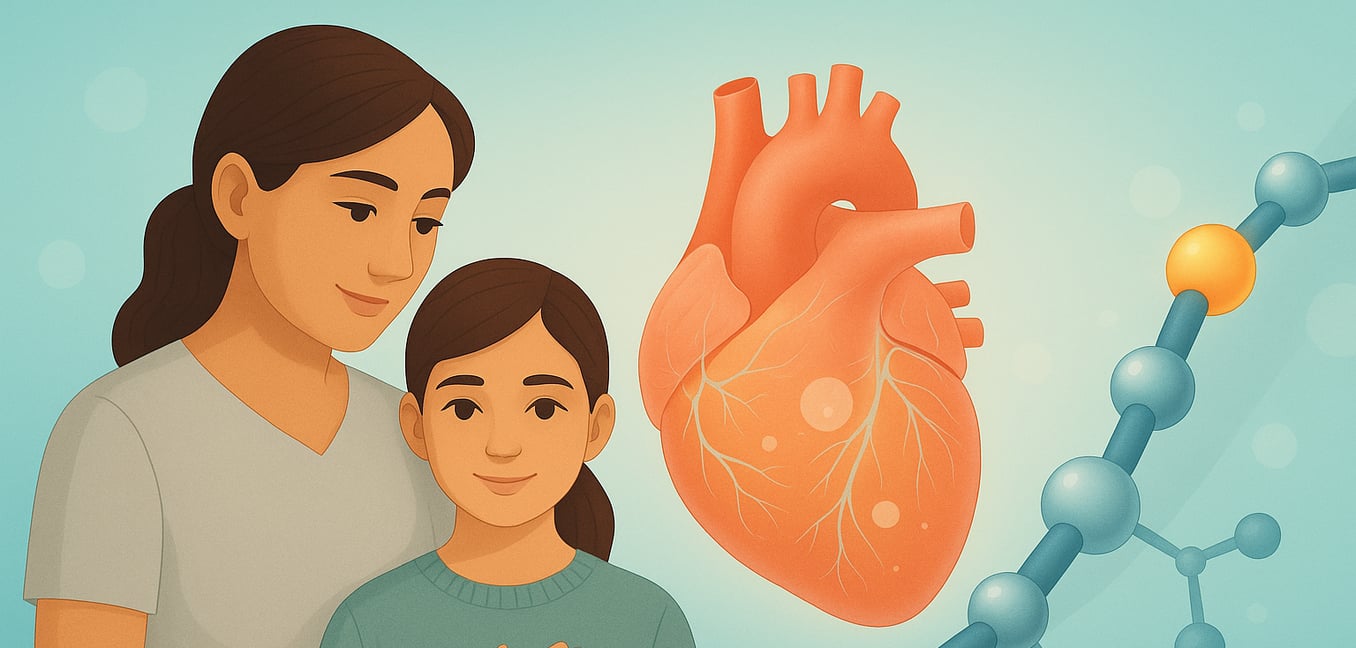A New Era of Research for Noonan Syndrome
Noonan syndrome is a genetic condition that affects development in various ways, often characterized by distinct facial features, short stature, and potential heart conditions10. Caused by mutations in genes that regulate cell growth—a pathway known as RAS-MAPK—the syndrome's effects can range from mild to severe6. While there is no cure, a wave of recent research is transforming how we diagnose, manage, and even reverse some of its most serious complications8. From AI-powered diagnostic tools to targeted drug therapies, these breakthroughs are offering new hope to individuals and families worldwide9.
Innovations in Diagnosis for Diverse Populations
Historically, diagnosing Noonan syndrome has relied on clinical signs documented primarily in people of European descent, creating a barrier to accurate diagnosis in diverse populations. Groundbreaking international research is now creating a more inclusive and accurate picture of the syndrome, paving the way for tools that help clinicians everywhere recognize the condition more effectively.
A Universal Diagnostic Picture
A landmark international study has confirmed that the core features of Noonan syndrome are remarkably consistent across the globe. By evaluating children from 20 different countries, researchers discovered that key characteristics—such as widely spaced eyes, low-set ears, short stature, and a heart condition called pulmonary stenosis—were common among white, African, Asian, and Latin American children with the syndrome2. This discovery is a crucial step toward building a global diagnostic standard that works for everyone, ensuring no child is overlooked due to their ancestry1.
AI-Powered Precision
To make diagnosis more objective, scientists used advanced facial analysis technology to analyze 126 distinct facial features1. This digital approach measured the unique distances and angles between features to identify patterns associated with Noonan syndrome, successfully diagnosing patients from all ethnic groups with an impressive 88 percent accuracy. The technology proved even more powerful when focused on a single group at a time, with accuracy rising to over 94 percent for individuals of African or Asian descent, highlighting its potential as a powerful aid for clinicians. These findings are now being used to create the Atlas of Human Malformation Syndromes in Diverse Populations, a digital resource designed to empower healthcare providers to make earlier, more confident diagnoses, especially in regions without easy access to genetic testing.
Once a diagnosis is made, the focus shifts to managing symptoms—and new research is showing it may be possible to do more than just manage71.
Targeting the Genetic Root of Complications
A major breakthrough in Noonan syndrome treatment comes from understanding its core genetic mechanism92. The condition is a "RASopathy," caused by an overactive cell-signaling pathway called RAS-MAPK, which can lead to uncontrolled cell growth9. This same pathway is involved in some cancers, leading researchers to test trametinib, a drug known as a MEK inhibitor that effectively "applies the brakes" to this pathway92. This targeted approach is showing incredible promise in reversing severe symptoms82.
Reversing Severe Heart Conditions
One of the most serious complications is hypertrophic cardiomyopathy (HCM), a condition where the heart muscle thickens significantly, affecting its ability to pump blood. A retrospective study of children treated with trametinib found a significantly lower risk of death or need for a heart transplant2. In one powerful example, two infants with severe HCM experienced a complete reversal of their heart disease after just a few months of treatment72. Clinicians report seeing visible improvements in patients within weeks, including a lower heart rate and better overall growth72. While more research is needed to determine optimal dosage and treatment duration, this therapy is the first to address the genetic cause of the heart condition, not just its symptoms72.
Healing a Complex Lymphatic Disorder
This targeted approach has also proven effective for life-threatening lymphatic disorders92. The case of a 14-year-old girl named Maria, who faced significant health challenges from leaky lymphatic vessels, demonstrates this potential92. Despite multiple surgeries, her symptoms of internal bleeding and fluid buildup always returned9. Genetic sequencing identified a specific SOS1 mutation as the cause, which overactivated the same RAS-MAPK pathway9. Based on this, her doctors at Children's Hospital of Philadelphia started her on trametinib92. Within three months, her bleeding stopped, her health stabilized, and her mother reported a "night and day" transformation92. The treatment appeared to trigger a complete remodeling of her dysfunctional lymphatic system, offering new hope for others with similar genetic alterations92.
Beyond Physical Health: The Cognitive and Emotional Journey
While physical health is a primary focus, the impact of Noonan syndrome on cognitive development and the day-to-day lives of families is equally significant5. New research is now exploring potential treatments for learning difficulties and documenting the lived experiences of families to better understand their needs5.
The Power of a Diagnosis
For many families, the journey to a diagnosis is a long and difficult one8. As parent April Brownlee shared, receiving the official "Noonan syndrome" diagnosis changed everything8. It provided a name for the challenges and a framework for understanding her daughter's unique development8. A diagnosis validates the immense effort parents put into care and gives them a way to explain the condition to their child, empowering them with an understanding of a core part of who they are8.
Promising Research into Cognitive Function
Scientists like Dr81. Alcino Silva are uncovering how Noonan syndrome affects the brain8. Using mouse models, his lab discovered that the condition disrupts excitatory brain signals, which are crucial for learning8. Excitingly, they found that a brief treatment with lovastatin, a common FDA-approved drug, was able to reverse these learning deficits in adult mice82. While the road from mouse studies to human treatments is long, this work represents a monumental step toward a future where the cognitive challenges of Noonan syndrome might be treatable82.
Navigating the Social and Emotional Journey
A diagnosis often marks the beginning of a new, complex chapter8. Parent advocate Lisa Schill described the initial feeling of isolation after receiving a list of specialists with no direction on where to find support8. This experience highlights the critical need for robust support networks5. Over time, this journey often transforms parents into fierce advocates who organize fundraisers and build communities, directly funding the research that brings hope to families everywhere82.










